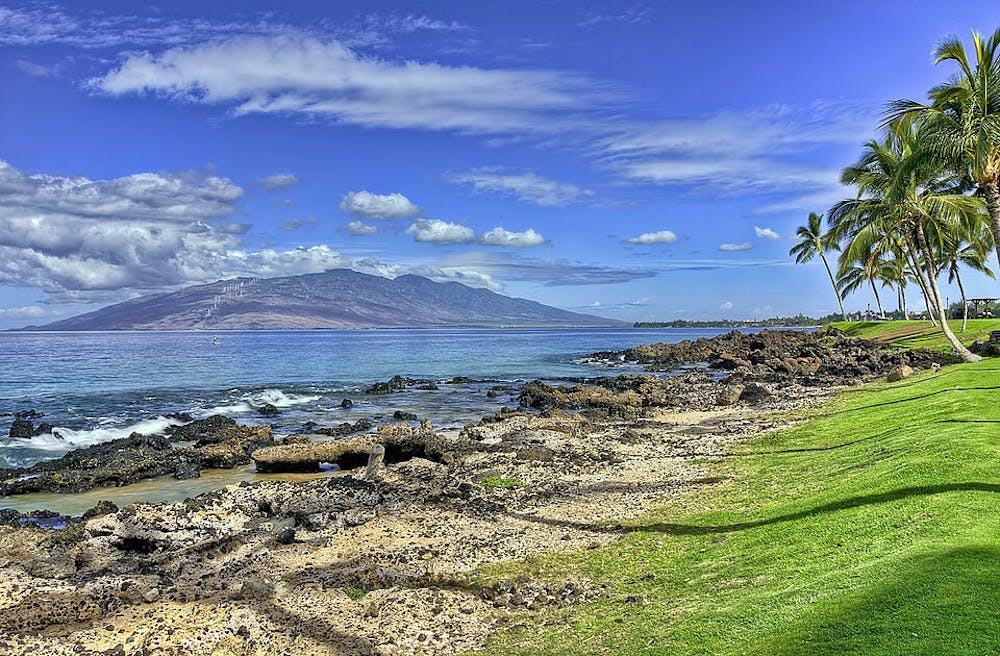By Parisa Burton
Nation & World Editor
Hawaii has witnessed a devastating decline in the number of tourist visits in recent years, with nearly half a million fewer tourists in 2025 compared to pre-pandemic levels. The island relies on visitors for its tourism industry to thrive, yet travelers often feel deterred from vacationing in the Aloha State at all, partly due to Maui Mayor Richard Bissen’s plan to eliminate thousands of vacation rentals, according to Beat of Hawaii.
Bissen’s plan focuses on short-term rentals along the region of West Maui, most of which have been operated for decades and are considered some of the most popular places to stay among tourists. Proponents argue that his plan is the “only way to reduce housing costs and preserve neighborhoods,” while others assert that it deters both visitors and locals and only exacerbates the crisis.
Statewide, there has been a 6.7% decrease in visitors compared to 2019 and a 23.4% decrease in Maui tourists. Simultaneously, the state is becoming more costly. Hotel rates have increased 29% from 2019 to 2024, with vacation rental prices also skyrocketing, resulting in reduced demand, according to SFGATE.
The dip in tourist visits since 2019 represents a long-term shift that strikes rental owners and small businesses that rely on vacationer dollars the hardest. Even frequent Maui visitors are feeling uncertain about booking their stay out of fear of losing their deposit if Bissen’s plan takes effect, Beat of Hawaii reported.
Others have taken a step back from visitation out of respect for locals who have faced devastating effects from the deadly wildfires in Lahaina in 2023. This disaster led to 102 deaths, the displacement of thousands and burned the town to the ground, according to PBS.
Survivor Sanford Hill told Frontline that he had no choice but to relocate to the island of Kauai, northwest of Maui, because of a lack of available housing. This has been especially challenging for Hill to navigate, as the disaster caused post-traumatic stress disorder and he fears a similar tragedy will strike again.
Following the Lahaina wildfires, the Federal Emergency Management Agency reported a 44% increase in median Maui rent between early 2023 and June 2024. FEMA has since leased homes to approximately 1,200 families that survived the impact and assisted another 500 families with financial aid. However, these families were required to pay rent starting in March 2025, determined by their economic position, and the temporary housing is set to expire in February 2026.
“We need to provide affordable housing for residents, not mainland owners for tourists,” reader Mike N. told Beat of Hawaii. “After Lahaina, the need is even greater.”
Hawaii business owners are recognizing the importance of reassuring residents that they are welcome to visit Maui after receiving feedback from frequent visitors on how the higher prices have changed their travel plans.
Joan Channon, Bamboo Restaurant and Gallery owner in Hawi, Hawaii, told SFGATE that they have seen “tremendous up-and-down cycles” in visitors, beginning with the COVID-19 pandemic. Channon had “relatively good years” in 2021 and 2022, but witnessed a significant dip in business after the Maui wildfires, which the restaurant is still recovering from.
Channon said the business hosted 459 dinners in February 2025, compared with 581 during the same period in 2024. However, in 2019, the restaurant did 1,212 dinners.
“I think the hotels and accommodations need to realize, if we want to keep guests, we have to lower our prices,” Channon said.
Another challenge Hawaii’s tourism industry is bracing for is the absence of international visits from key markets, including Japan and Canada. Recent political tensions have dissuaded people from these regions from visiting.
“Travelers from Vancouver to Tokyo to Western Europe voice concerns about being detained, harassed, or unwelcome,” Beat of Hawaii reported. Additionally, Hawaii halted its data on international travel numbers on March 1, which increases the difficulty of measuring the correlation between concerns and cancellations.
Some businesses are witnessing slight improvements in attracting visitors. Ashley Davis, co-owner of Mala Ocean Tavern and Coco Deck Lahaina, said although the businesses face ongoing challenges in filling seats each month after the wildfires, the local community has kept them afloat.
“While challenges persist, we have seen gradual improvements compared to last year as more visitors return and local support remains strong,” Davis told SFGATE.
Maui Kuia Estate, an award-winning chocolate seller based in Lahaina, hosts tours of its farm and factory. The company reopened after the fires in April 2024. They have also seen positive improvements in recent months, SFGATE reported.
“It’s not where it was, but it’s getting closer, whereas it was like half of what it was pretty much all of 2024, and my sales were down by about half,” said Gunars Valkirs, Maui Kuia Estate CEO.
Maui has witnessed a 10.6% increase in the number of visitors in the first two months of 2025 compared with 2024, but it’s still down 14.9% compared to 2019.
Valkirs attributed the drastic drop in tourism to discouraging messaging released after the wildfires, which urged visitors to avoid West Maui.
“The messaging didn’t change until the second half of 2024…It’s at least a six-month lag between the message and actual results,” Valkirs said. “I think we’re seeing those results now.”







